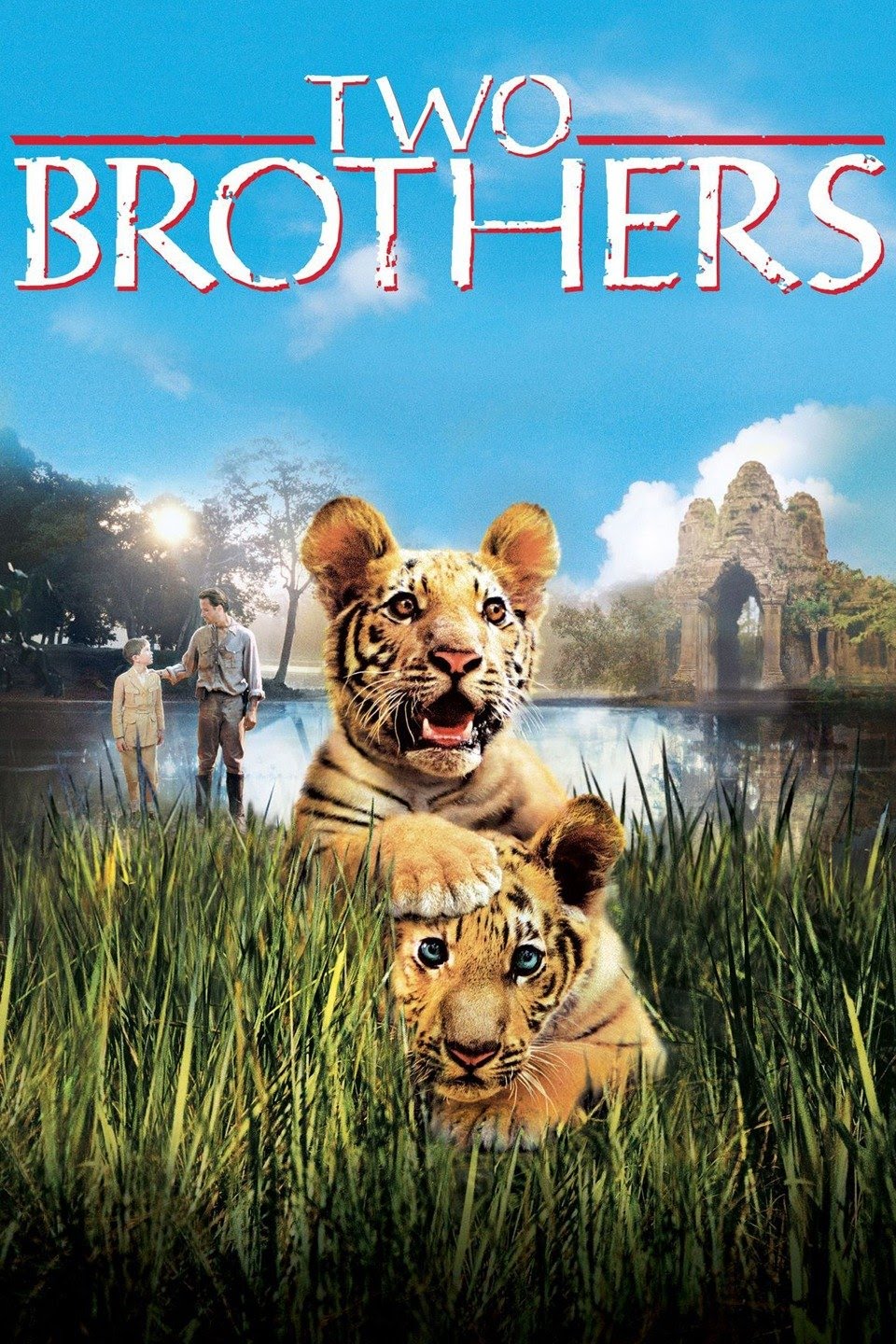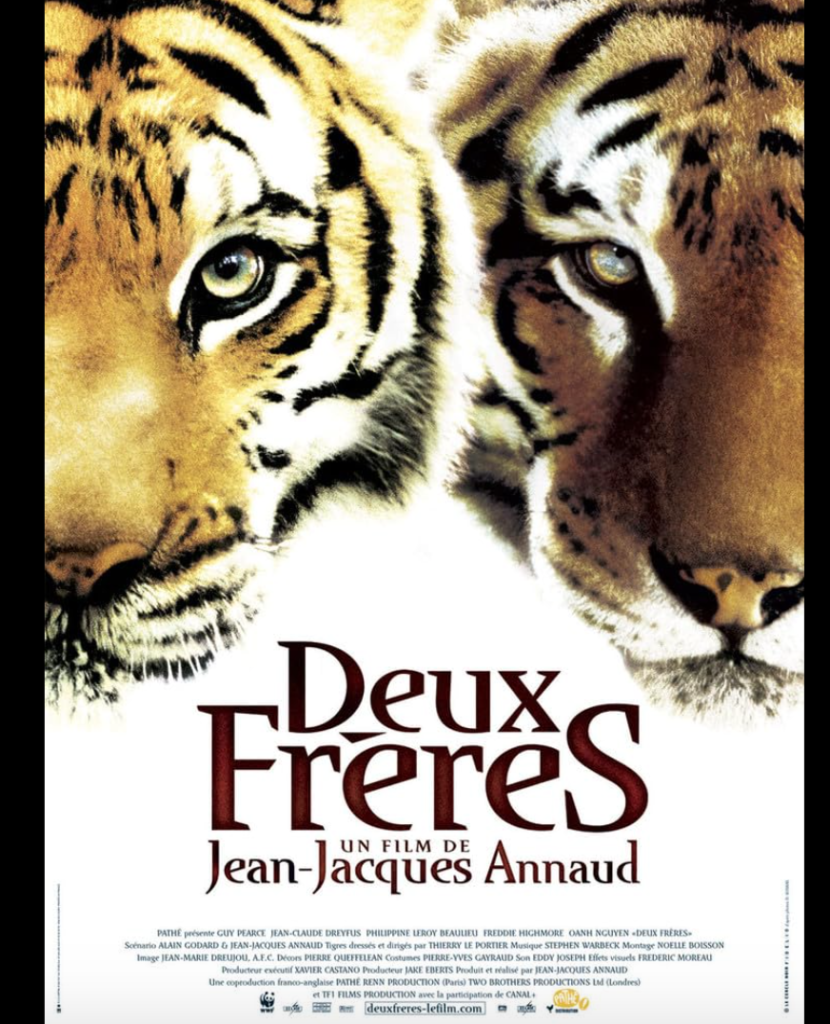
Set against the backdrop of 1920s French Indochina, Two Brothers chronicles the poignant journey of two tiger siblings, Kumal and Sangha. From playful cubs roaming freely in the wild, their lives take a turbulent turn when human intervention tears them apart. Kumal, captured by treasure hunters, ends up as a performing circus tiger, whilst Sangha, after a few skirmishes, becomes the prized possession of the colonial governor. The narrative beautifully captures the tigers’ transformation as they grapple with captivity, human interaction, and the longing for freedom. The intertwining of their individual stories not only offers a compelling portrayal of their resilient spirits but also delves into the profound impact of human ambitions on the natural world. The film prioritises these animal-focused elements, emphasising the brothers’ bond, their adaptation to contrasting environments, and their ultimate quest for reunification.
Two Brothers situates itself within the realm of the adventure-drama genre, a storytelling tradition that often brings the rawness of nature face-to-face with human endeavour. However, unlike typical adventure tales that prioritise human conquests, this film places the animal protagonists at the heart of the narrative. Director Jean-Jacques Annaud, known for his affinity towards films that explore human-animal dynamics, as seen in The Bear, uses characteristic elements of slow pacing, scenic shots, and emotive soundscapes to immerse viewers into the world of Kumal and Sangha. Through the lens of this genre, the film effortlessly bridges the gap between the narrative style of classic adventure tales and the intricate portrayal of animals. The juxtaposition of the bustling activities of the 1920s French colonial era with the pristine natural world creates a vivid canvas upon which the tales of these two tigers are painted.
Two Brothers unspools a narrative that is as visually mesmerising as it is emotionally resonant, placing at its heart two tiger cubs, Kumal and Sangha. Director Jean-Jacques Annaud, known for his affinity for creating compelling tales that intersect human and animal worlds, presents these tigers not merely as supporting fauna but as the protagonists with their own stories, desires, and challenges. From the film’s outset, the audience is drawn into the intimate lives of these brothers, their playfulness, their bond, and their exploration of the lush, untamed world around them. The camera’s focus on their expressive eyes, their interactions with each other, and their environment builds a narrative foundation rooted in their perspective. Their journey, rife with moments of joy, separation, and reunion, doesn’t merely reflect the lives of wild animals, but also serves as a poignant mirror to broader themes of family, survival, and freedom. In Two Brothers, the tigers are not just the heart but also the soul of the story, around whom the entire narrative orbits.
The Innocence of Childhood and Exploration
Jean-Jacques Annaud crafts a poignant narrative in Two Brothers, exemplifying the innocence and curiosity of childhood through the eyes of the two tiger cubs, Kumal and Sangha. This exploration of youth is not limited to human protagonists but extends profoundly to these wild beings. Much like young children, the cubs are insatiably curious about their surroundings, venturing into the unknown, playing with whatever catches their eye, and learning from every experience.
The setting, a verdant and teeming Southeast Asian jungle, is both their playground and classroom. Annaud, with his characteristic meticulousness, captures scenes of the cubs chasing dragonflies, play-fighting, or simply lying together, soaking in the world around them. These scenes, while seemingly mundane, are imbued with significance. They are not just about two animals in their habitat, but a celebration of the universality of childhood—its joy, its naivety, and its boundless energy.
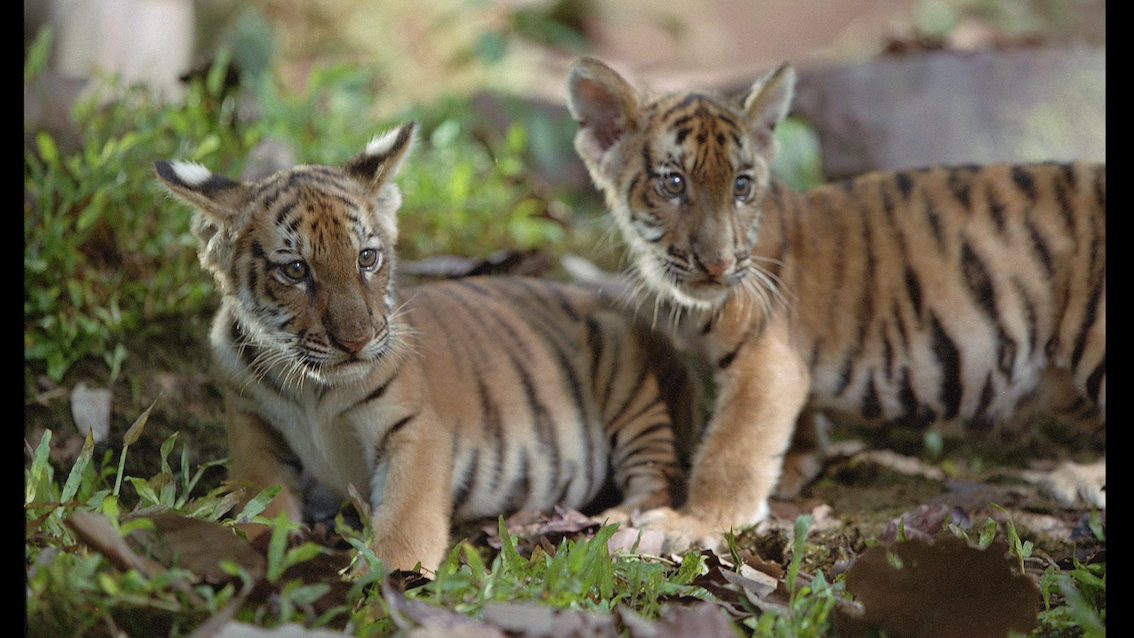
Furthermore, the portrayal of the cubs’ interactions with their environment and other animals resonates with the audience’s memories of childhood play and exploration. There’s a sense of wonder in their eyes, a relentless urge to explore, and an innocence that’s untouched by the world’s complexities. Yet, this very innocence becomes their vulnerability when they face the human world, a theme that the film delves into with increasing intensity.
This portrayal also becomes a metaphorical lens, shedding light on how innocence often becomes a casualty in the larger battles of adulthood, power, and possession. In presenting the cubs’ innocent exploration of their world, Annaud not only crafts a moving narrative of the animal kingdom but also comments on the loss of innocence and the sometimes harsh transition from childhood to adulthood.
Contrasting Lives: Circus vs. Royalty
Two Brothers skilfully contrasts the diverging fates of its titular characters, highlighting how socio-economic conditions can impact the treatment and perception of animals. One brother, Kumal, finds himself entangled in the cruel, demanding world of circus entertainment. Here, the tiger’s majestic nature is reduced to mere spectacle for human amusement. The circus environment is rife with oppression: tight cages, scant regard for the animals’ well-being, and a constant drive to make them perform, sometimes under duress. The film doesn’t shy away from depicting the grim reality of many animals in circuses, with trainers using aggressive methods to instil fear and obedience. Kumal’s once wild spirit is dampened, and his natural behaviours are suppressed in favour of tricks that appeal to a cheering crowd.
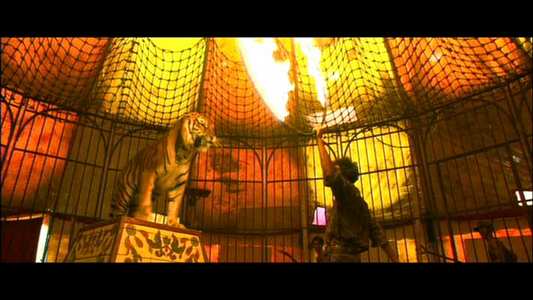
Contrastingly, Sangha, the other brother, is thrust into a life of royalty, becoming a prized possession of the local governor. While still a form of captivity, his living conditions are leagues ahead of Kumal’s. Surrounded by opulence, Sangha resides in spacious gardens and receives care from dedicated attendants. The environment suggests a level of respect for the tiger’s regal nature. However, this gilded cage is not without its limitations. Sangha’s life, while comfortable, is still dictated by human whims. He’s an emblem of power and status, a symbol rather than a living being with its own desires and instincts.
Through these contrasting scenarios, Two Brothers offers a poignant commentary on the idea of captivity. Both tigers, despite their vastly different surroundings, are distanced from their natural habitats and freedoms. The film subtly underscores the idea that no matter the gilded trappings, captivity, in any form, curtails the inherent wild spirit of animals.
The Reunion and the Quest for Freedom
The heart of Two Brothers truly reveals itself in the emotionally charged reunion of Kumal and Sangha. After enduring separate hardships and navigating different worlds, their encounter is more than just a simple reunion of siblings; it becomes a symbolic representation of the natural world clashing with human imposition.
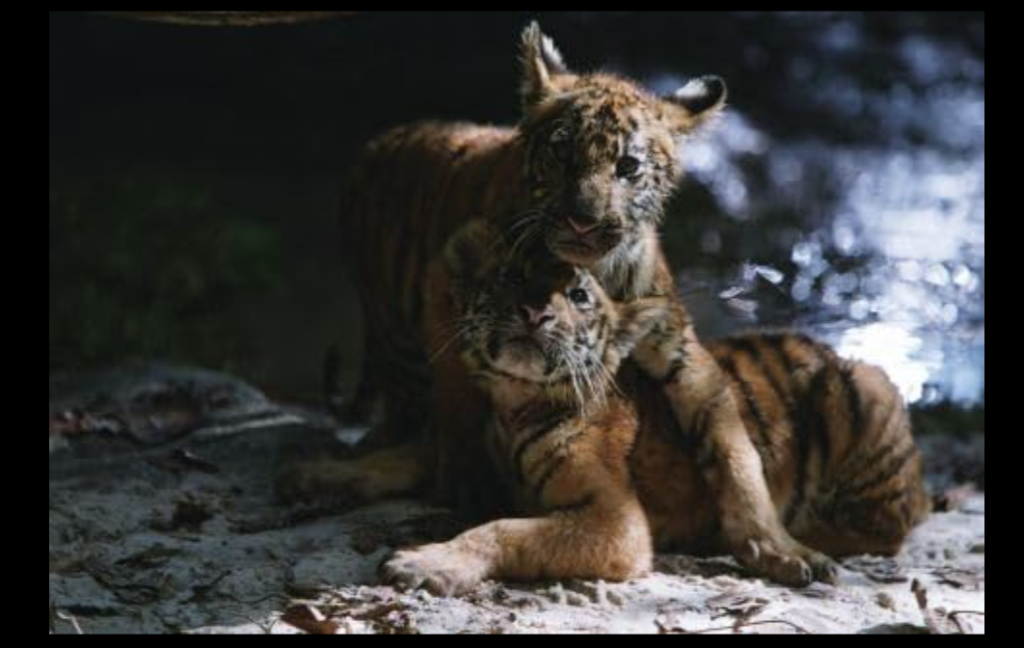
In their embrace and play, there’s a palpable sense of longing and remembrance, a nostalgic yearning for the days of shared innocence and wild freedom. This moment, filled with raw emotion, is a stark reminder of their lost childhood in the jungle, a time unmarred by human intervention. Their interactions are imbued with an almost human-like quality, showcasing the depth of their bond and making their separation all the more heart-wrenching for the viewer.
The theme of freedom is omnipresent in their reunion. Their joint quest to escape human clutches and return to the wild becomes a potent symbol of the broader struggle faced by many animals in captivity. It raises questions about the ethics of subduing wild animals for human entertainment, comfort, or prestige. The brothers’ journey to freedom challenges the viewer to reflect on humanity’s often exploitative relationship with the natural world.
Moreover, their story touches on the broader ramifications of human actions. The deforestation that initially separates the family, the hunt for exotic pets, and the use of animals as commodities in circuses and as status symbols are all facets of human ambition and desire at the expense of the natural world. Through the tale of Kumal and Sangha, Two Brothers drives home the profound consequences of these actions, prompting introspection on our role in and responsibility towards the intricate tapestry of life on Earth.
Nature vs. Nurture: The Impact of Upbringing
Two Brothers offers a deep exploration into the concept of nature versus nurture through the contrasting lives of Kumal and Sangha. Despite being twins, their separation and subsequent experiences lead them down divergent paths, and the film skillfully unravels the effects of their unique upbringings on their temperaments and behaviours.
Kumal’s life in the circus is a harrowing tale of subjugation and exploitation. Stripped of his freedom and subjected to rigorous training, his spirit is tamed to meet the demands of the entertainment industry. His experiences shape him into a subdued, obedient creature, a stark contrast to the playful and curious cub he once was. The circus, with its confining cages and dominance-driven training, becomes a symbol of the oppressive human intervention that stifles the essence of wild creatures, turning them into mere shadows of their natural selves.
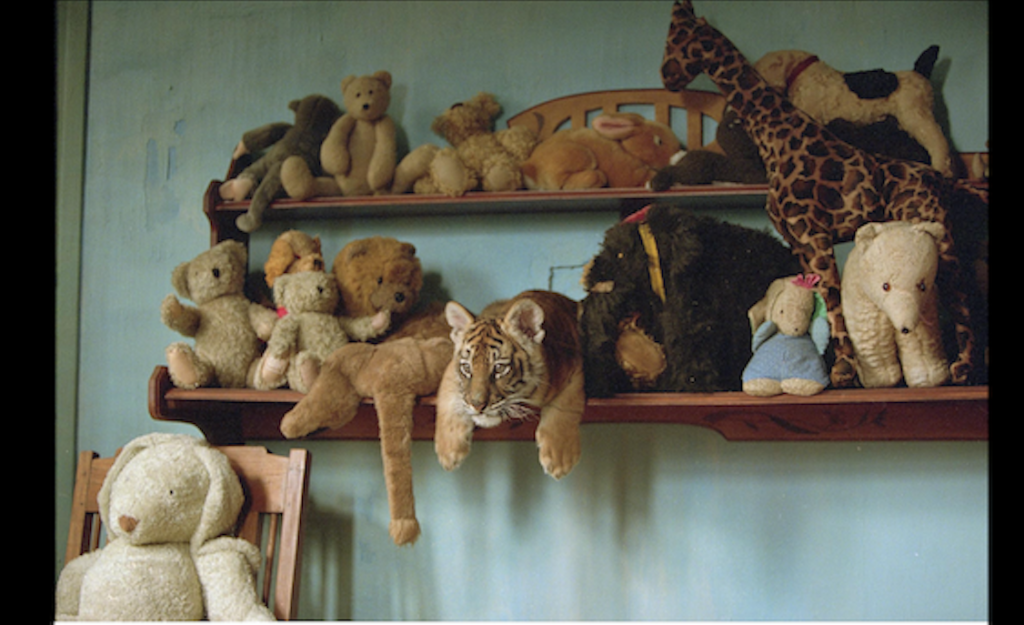
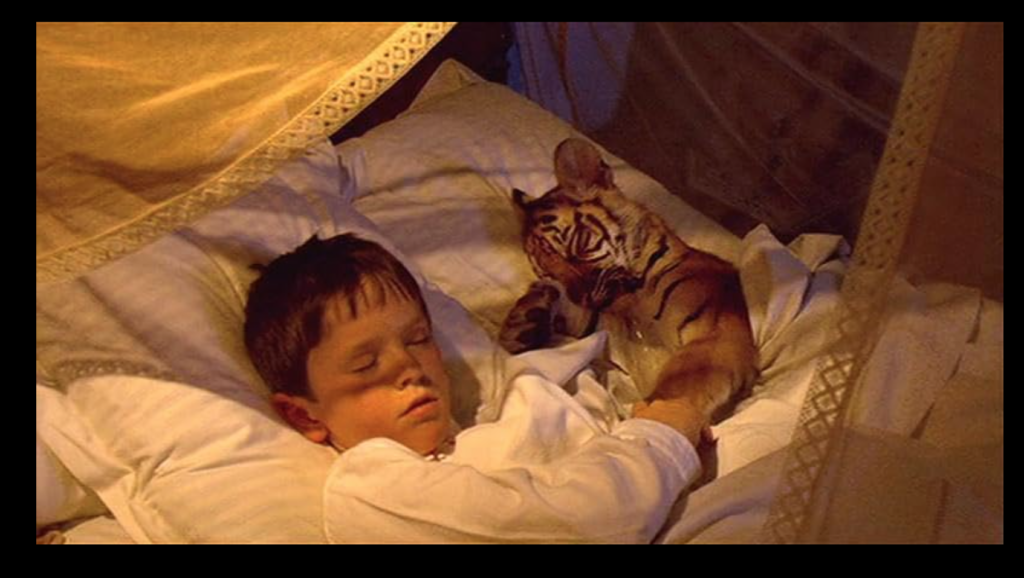
On the other hand, Sangha’s life with the royal family presents a different kind of domestication. While he’s pampered and treated as a prized possession, he’s still removed from his natural habitat. Living in opulence, Sangha develops a sense of entitlement, evident in his aggressive dominance over other animals in the royal household. His upbringing instils in him an artificial sense of superiority, which contrasts sharply with the egalitarian world of the jungle.
The film beautifully showcases how their individual upbringings influence their behaviours when they reunite. The initial hesitation, the testing of boundaries, and the eventual recognition are all tinged with the impact of their lived experiences.
In sum, Two Brothers delves deep into the age-old debate of nature vs. nurture. By placing the tiger siblings in disparate human-imposed environments, the film offers a poignant commentary on the profound influence of upbringing on one’s inherent nature.
Visual and Aural Techniques in Emphasising Human-Animal Relations

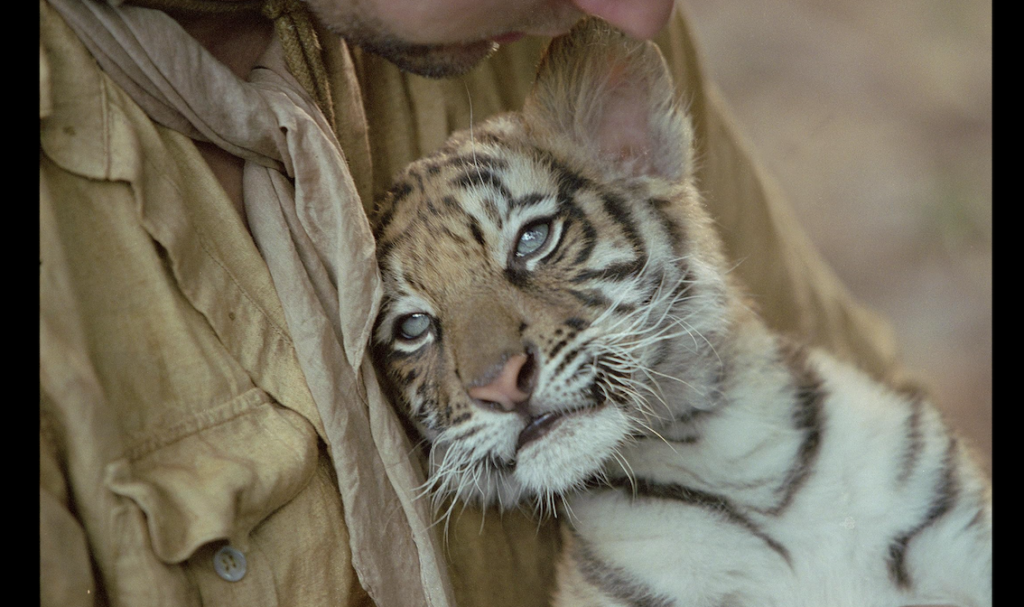
The cinematography in Two Brothers brilliantly captures the majesty of the tigers and the lushness of their natural environment. Panoramic shots of the verdant jungle contrast sharply with the cramped, confining visuals of cages and urban settlements. The film’s score, haunting and evocative, underscores the emotional highs and lows of the tigers’ journey. Particularly noteworthy are the close-ups of the tigers’ eyes, revealing depths of emotion and intelligence, challenging the boundary between human and animal understanding. These visual and aural elements work in harmony to accentuate the complex, often heart-rending dynamics of human-animal relationships presented in the narrative.
Conclusion
Two Brothers poignantly portrays the inherent innocence of animals, especially when ensnared in the web of human ambitions and societal structures. The tigers, despite their grandeur and power, become pawns in human conflicts, epitomising the vulnerability of wildlife. Yet, the film doesn’t solely dwell on the melancholy. Instead, it showcases the indomitable spirit, resilience, and fierce loyalty of these majestic creatures. Even when faced with dire circumstances, their bond remains unbreakable, offering viewers a reflection on the depth of relationships in the animal kingdom and urging a greater empathy towards all beings.
Two Brothers is a cinematic tapestry woven with intricate themes of familial bonds, survival, and the human-animal dynamic. At its core, it serves as a reminder of the consequences of humanity’s actions on the natural world. The contrasting lives of the tiger siblings — one caged within the spectacle of a circus and the other in the confines of royalty — elucidate the various forms of captivity animals endure. Yet, it’s the poignant reunion and quest for freedom that resonates deeply, underlining the universal yearning for liberty. The film stands as a testament to the profound connections shared between humans and animals, beckoning viewers to tread a path of empathy and understanding.
Bibliography:
Berger, John. Why Look at Animals? In About Looking. Pantheon, 1980, pp. 1–26.
Lippit, Akira Mizuta. Electric Animal: Toward a Rhetoric of Wildlife. University of Minnesota Press, 2000.
Two Brothers. Dir. Jean-Jacques Annaud. Pathe, 2004.
Further Reading:
Baker, Steve. Picturing the Beast: Animals, Identity, and Representation. University of Illinois Press, 2001.
Burt, Jonathan. Animals in Film. Reaktion Books, 2002.
Pick, Anat. Creaturely Poetics: Animality and Vulnerability in Literature and Film. Columbia University Press, 2011.
Rothfels, Nigel, ed. Representing Animals. Indiana University Press, 2002.
Malamud, Randy. An Introduction to Animals and Visual Culture. Palgrave Macmillan, 2012.
